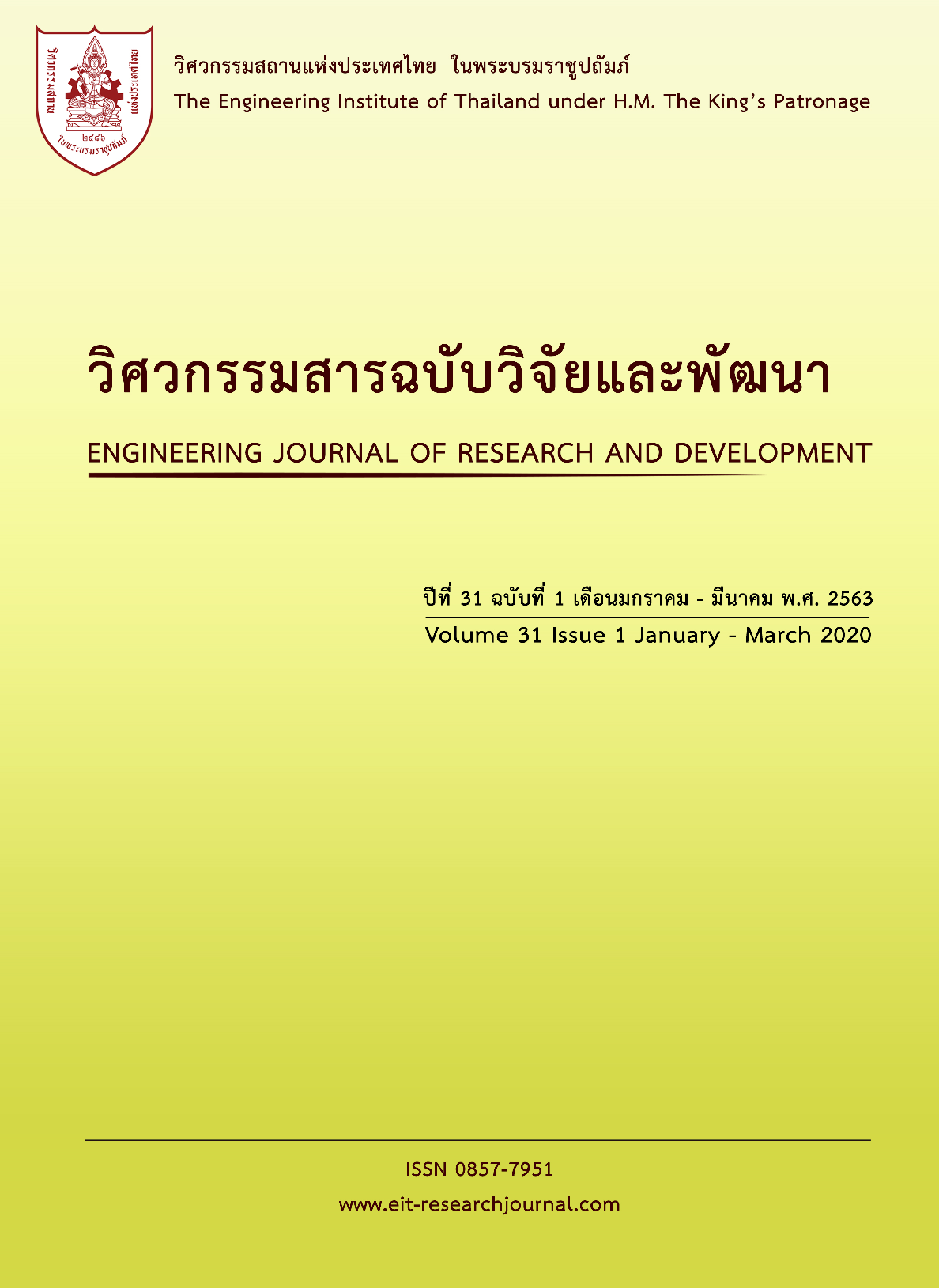การออกแบบโครงสร้างส่วนล่างของทางรถไฟแบบมีหินโรยทางโดยพิจารณาจากสมรรถนะของดินพื้นทาง
Main Article Content
Abstract
This paper presents a design procedure to determine the thickness of granular layer of ballasted railroad track based on the engineering performance of subgrade soil. The present procedure is a modification of Li and Selig method and is developed particularly for meter-gauge railroad tracks. It reflects and models two key aspects of the mechanical track response: 1) development of permanent or plastic strains of the subgrade soil subject to accumulated traffic loads and 2) stress-distribution characteristics in the track structure. A realistic three-dimensional model of railroad track based on elasticity theory is employed to analyze the stresses, while the accumulation of plastic strain of the subgrade soil is modeled by a power function. The modeling results, when combined together, render a robust method to determine granular layer thickness that is sufficient to prevent excessive deformations and subsequent failure of the subgrade. Design charts based on the present methodology and suitable for the typical service conditions for railroad tracks in Thailand are introduced and provided.
Article Details
The published articles are copyright of the Engineering Journal of Research and Development, The Engineering Institute of Thailand Under H.M. The King's Patronage (EIT).


